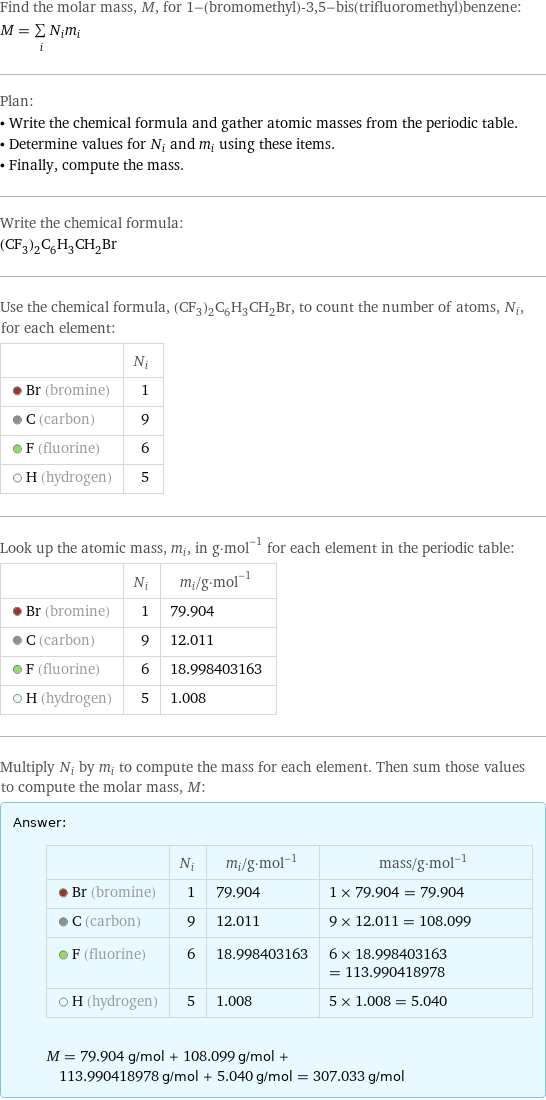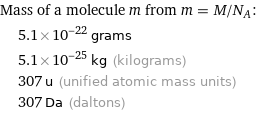Input interpretation

1-(bromomethyl)-3, 5-bis(trifluoromethyl)benzene | molar mass
Result

Find the molar mass, M, for 1-(bromomethyl)-3, 5-bis(trifluoromethyl)benzene: M = sum _iN_im_i Plan: • Write the chemical formula and gather atomic masses from the periodic table. • Determine values for N_i and m_i using these items. • Finally, compute the mass. Write the chemical formula: (CF_3)_2C_6H_3CH_2Br Use the chemical formula, (CF_3)_2C_6H_3CH_2Br, to count the number of atoms, N_i, for each element: | N_i Br (bromine) | 1 C (carbon) | 9 F (fluorine) | 6 H (hydrogen) | 5 Look up the atomic mass, m_i, in g·mol^(-1) for each element in the periodic table: | N_i | m_i/g·mol^(-1) Br (bromine) | 1 | 79.904 C (carbon) | 9 | 12.011 F (fluorine) | 6 | 18.998403163 H (hydrogen) | 5 | 1.008 Multiply N_i by m_i to compute the mass for each element. Then sum those values to compute the molar mass, M: Answer: | | | N_i | m_i/g·mol^(-1) | mass/g·mol^(-1) Br (bromine) | 1 | 79.904 | 1 × 79.904 = 79.904 C (carbon) | 9 | 12.011 | 9 × 12.011 = 108.099 F (fluorine) | 6 | 18.998403163 | 6 × 18.998403163 = 113.990418978 H (hydrogen) | 5 | 1.008 | 5 × 1.008 = 5.040 M = 79.904 g/mol + 108.099 g/mol + 113.990418978 g/mol + 5.040 g/mol = 307.033 g/mol
Unit conversion

0.30703 kg/mol (kilograms per mole)
Comparisons

≈ 0.43 × molar mass of fullerene ( ≈ 721 g/mol )

≈ 1.6 × molar mass of caffeine ( ≈ 194 g/mol )

≈ 5.3 × molar mass of sodium chloride ( ≈ 58 g/mol )
Corresponding quantities

Mass of a molecule m from m = M/N_A: | 5.1×10^-22 grams | 5.1×10^-25 kg (kilograms) | 307 u (unified atomic mass units) | 307 Da (daltons)

Relative molecular mass M_r from M_r = M_u/M: | 307